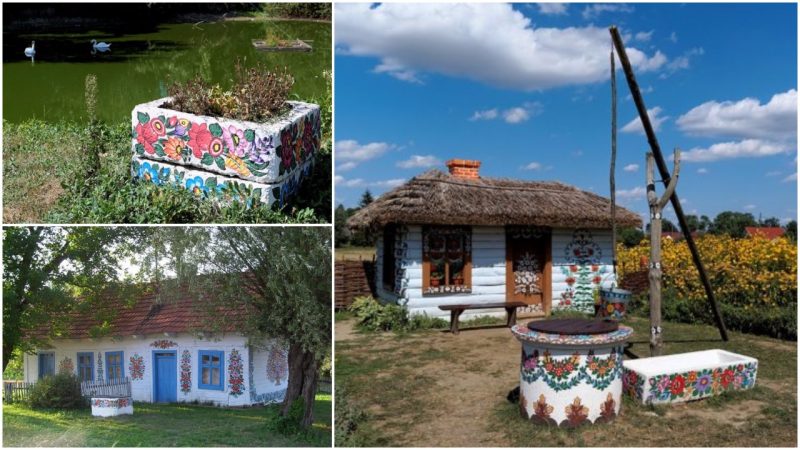There was a time not so long ago when a woman from a small village in South-East Poland painted colorful little flowers on the walls and ceiling of her house in order to cover up soot stains, the result of using traditional stoves inside a home. These black marks were a common problem for households in the late 19th century.
Shortly afterward, other women from the village noticed the change: The blackened walls were gone and the interior of the house was lightened. Following her example, the walls and ceilings of the wooden cottages soon looked like flower gardens. The women were even producing their own pigments inspired by natural hues from the gardens, using fat and dye and making their own brushes from cow hair.
But the women didn’t stop there. They started decorating not only the interior but also the houses’ exterior with lovely flower patterns. Today, the unique village of Zalipie is vibrant and beautiful. It is all about flower power: the furniture, pots and pans, vases, rooms, facades of the houses, corridors, the outhouses, and even the village bridge and the village church, St. Joseph, are adorned with impressive flower folk motifs.
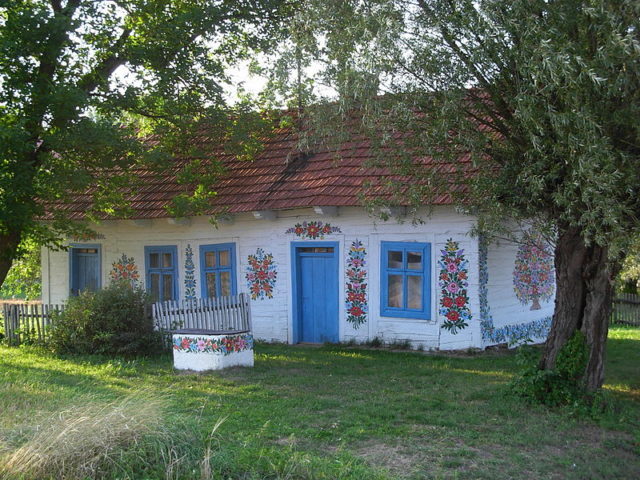
One local woman, in particular, was responsible for the evolution of this folk art, Felicja Curylowa, who lived from 1904 to 1974. She had shown an interest in painting flowers from a young age. One day, when her parents had gone to market, 10-year-old Felicja painted the ceiling of her home with lime and soot in floral designs. Once her parents arrived home, they were very angry because of the dangerous activity of their child, but also astonished by her beautiful work on the ceiling.
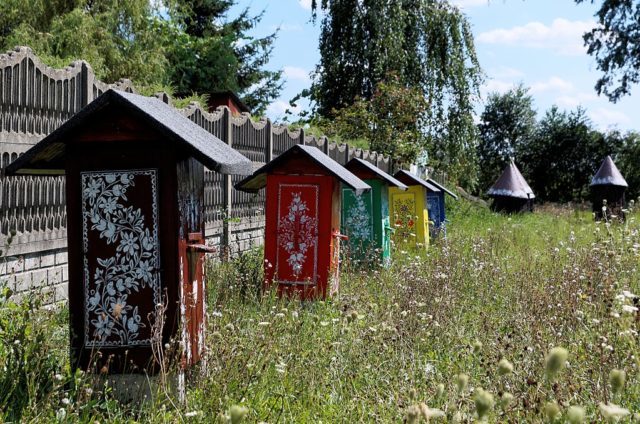
Later on, the talented Felicja became a great artist and was employed by Wloclawek, one of the most important pottery manufacturers in Poland. The pieces that she designed are quite expensive to buy even today. Felicja had a great impact on the colorful bouquets of flowers painted around the village. She taught the women of the village how to create the charming patterns and soon they earned money by painting other people’s houses. Each artist had a different style of floral ornamentation.
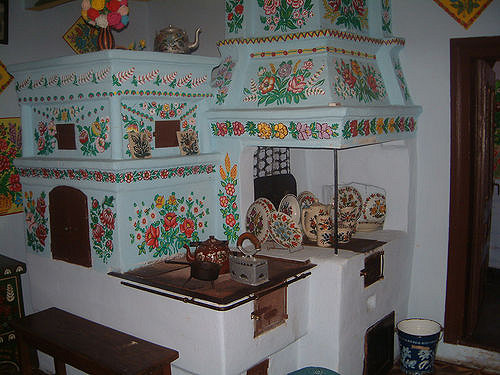
The house where Felicja lived still stands in the village and is now a museum open to the public. The curator of the yellow cottage painted with small blue flowers is Wanda Racia, a granddaughter of Felicja Curylowa. The house looks the same as Felicja left it before her death: the ceiling that she painted when she was a child, the beautifully painted stove, and the walls covered with painted flowers are still there. Felicja is buried in the cemetery in Zalipie and her grave is adorned with tiles painted by the skilled artist herself.
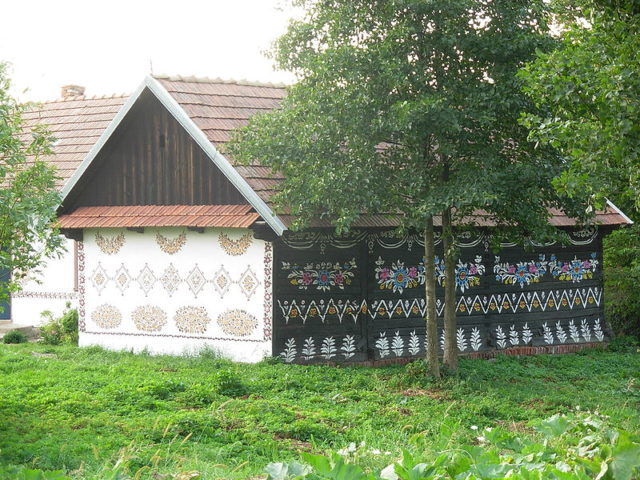
The Polish government also played a role in keeping the tradition alive. In 1948 they organized a painting competition called Malowana Chata (Painted Cottage) in order to help the country recover during the post-war period. Many women participated in the contest, hoping to be the best painter in the village, and among them was the famous Felicja Curylowa. Since then, the event has been held annually around the festival of Corpus Christi, and in modern times, both men and women are allowed to compete.

Although the village looks like an open museum, it is inhabited, with residents who are very polite and usually invite visitors into their “blossoming cottages” to admire their artwork. In fact, the only house that functions as an official museum is Felicja’s house. However, the village’s importance has not gone unnoticed in Poland.
The Ethnographic Museum in Krakow has dedicated an entire section to the lovely artwork of Zalipie, the customs of the Polish people, and their life in the countryside.
Related story from us: Cerro de Potosi: The silver mother lode of the world
Although not many people have heard of the village, those who have visited Zalipie describe it as one of the most picturesque villages in Eastern Europe.
